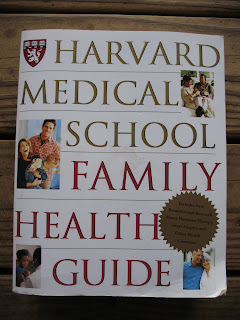Sorry that I'm a little behind in posting, but we have been having something of a crisis in East Texas. First, an unprecedented drought. East Texas is usually a pretty wet place, receiving about 45 inches of rain a year. But it hasn't rained, other than a few sprinkles, in months. It hasn't been this bad since the 1950's. Then we've had over 70 days of 100 degree or higher temperatures. This has dried things out even more. Then over the last weekend we started having high winds due to a tropical storm that brought us only the wind and no rain. That's when the fires started. Several thousand acres of field and forest, and dozens of homes have burned in our area. The mandatory evacuation area came to within three-quarters of a mile of our farm. So, my computer, along with other things, has been packed in the truck; ready to flee from the flames if necessary. The wind has died down, and the fires are all currently contained, but we've still had no rain. So now I've had to take a look at another disaster scenario that I need to plan for, WILD FIRE.
First I had to look at what we've already done right. A fairly good list..
(1) My house has a metal roof, so burning cinders will not ignite the house from above.
(2) We have smoke alarms and fire extinguishers in the house in case a fire starts inside the house, but this is of little help in the case of a wild fire.
(3) All of our important legal documents are stored in a portable fire-proof lock box. These items include birth certificates, social security cards, passports, land and car titles, insurance policies, etc.
(4) Our fire insurance policy is paid up
(5) We have digital pictures of every room in the house from several angles showing all of the furnishings, appliances, etc. We have exterior shots of the house from all angles. We have shots of the shop and all equipment and also of the storage building and contents. Insurance companies brag about how on-the-spot they are and how they settle claims right away. They do this so you will sign off on a settlement before you have a chance to really think about all of the things that you have lost. Take pictures to document what you have, then take your time to make a complete list of lost items. Don't let the insurance company rush or intimidate you.
(6) We have a good communication net with our neighbors to warn of coming danger. One neighbor has a cleared pasture that is about 300 acres. In the middle of it is a hill, and on top of the hill is his two story house. He has an unobstructed 360 degree view for miles around. During the recent outbreak of fires we discovered that watching the news is a waste of time. Their information is inaccurate, incomplete, and hours behind real-time. Instead, my neighbor and his wife took turns scanning the surrounding area from their high vantage point. When they saw smoke they would zero in on it with a 60X spotting scope. They would then call one of the other neighbors or me and give us a bearing on the fire. We would drive over and access its potential threat to our area. We would then report back via cell phone to the other neighbors. It worked well for us.
Now to the stuff that I've done wrong or haven't done at all.
(1) The Forest Service used to come out and do controlled burns to clear underbrush, fallen limbs, leaf litter, and other things that could fuel a major fire. I had this done years ago, but a lot of debris has built up since. I don't know if the Forest Service still does controlled burns, but I definitely need to check. If you are in a similar situation, you should check into this also.
(2) The tree line is far to close to my house on at least one side. I need to spend this winter clearing underbrush and small trees, and selling larger trees for pulpwood. My goal is to have at least 50 yards of open ground completely around the house.
(3) Flammable fuel is stored too near the main structure. I need to move these items farther out. It will be kind of a pain when I need a new fuel bottle for the stove, or gas for the generator; but seeing aerial video of houses exploding in your area has a sobering effect. I will walk the extra distance.
(4) I have no active fire suppression system. A friend of mine rigged a nice little system around his house using PVC pipe so that when he turns the system on it sprays down the outside of his house with a constant blanket of water, kind of an upside down lawn sprinkler system. Looks like a pretty good idea. I will definitely check into it. Another friend has a submersible pump in his swimming pool that he can use to spray down the outside of his house. I don't have a swimming pool, so this isn't an option for me; but it may be for you. If you already have lawn sprinklers it might be a good idea to run a leg around the house that you can turn on to spray down the outside of the house.
So I guess the moral of this tale is that there's no end to preparedness. There's always something else. Don't get paranoid, and don't be overwhelmed, just look at it as another little home project that you need to take care of.












